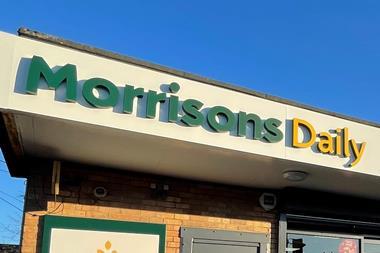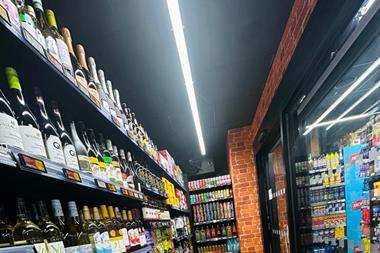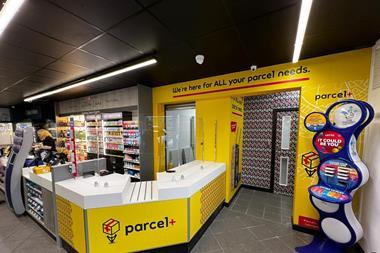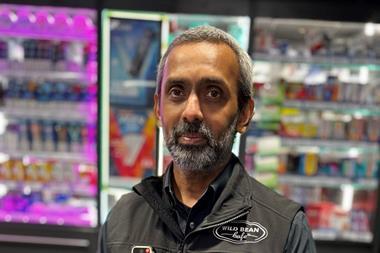Whether you’re big on fresh or keen on value, getting the message across to consumers is as important as the stock on your shelves. C-Store speaks to retailers who have changed the way shoppers view independent retail stores.
The multiples may not have done the independent retail sector many favours with the advent of their small store formats, but the one thing we do have to thank them for is altering the perception that all small stores are lacking in professionalism and high standards.
How shoppers view your business is becoming increasingly important in the battle to see off the competition, and foresighted retailers are coming to realise that there are ways in which they can influence these perceptions.
One symbol group that set out to change customer perceptions right from the outset is Simply Fresh. When the first Simply Fresh store opened back in 2008, director Kash Khera and his team wanted to create a model that smashed any preconceived views of independent stores. “We wanted our stores to be more like mini wholefood markets, but not as expensive and certainly more accessible,” he asserts.
How did he achieve this? By simple design techniques. “To do this, we brought more theatre into the stores, moved the bakery to the front of the shop and included market-type fixtures such as fruit and vegetables in baskets.” This is matched by clean lines, good lighting and the timeless black and green fascia.
Kash is keen to introduce new elements to Simply Fresh stores all the time, keeping the look fresh and customers interested. “We’re now bringing the kitchens out to the shopfloor to create even more theatre for customers and introducing more premium food-to-go offerings,” he explains.
He says that shoppers may still have pre-conceived notions that need to be broken down, though. “When we open a new store, I’ll ask customers what they think of it and they’re always pleasantly surprised by the range,” says Kash. “They tell us they didn’t expect that from a convenience store and this makes them take a little bit longer when shopping in the store.”
Kash says that shaping the way customers see your store is key to its success; a store that has a bad reputation among its community will struggle. “I’ve spoken to some shoppers who say they wouldn’t even buy milk from their local c-store because they have an idea in their head about it,” he says. “Retailers need to instil confidence.”
Fit for purpose
For Simply Fresh it was a matter of starting off on the right track, but how does a long-established retailer get their community to think again about what the store can offer? One way is to change the physical appearance of a store, as Dean Holborn of Holborn’s in Redhill, Surrey, recently did.
A large-scale refit gave Dean the chance to create a premium look and set it apart from others in the industry. Dean says that shoppers are tired of the same old stores and are craving something different. “There are a lot of stores out there that are very similar, so it shouldn’t take much to give yours a different look and feel,” he says. “You want to create your own identity as a store, as well as being somewhere that customers can get everything they need.”
To create the right image, Dean introduced a country kitchen look, using wooden tables to display goods, and an upmarket muted green tone throughout. Although the interior is still being tweaked, customer reaction has been very positive, with shoppers surprised that a convenience store can have a look like his.
“Everyone seems to love it,” he says. “They love the use of the wood, the lighting and the colour, and it helps bring customers back because it’s different. The multiples would love to have a look like this, but they can’t replicate it like independent stores can.”
Roli Ranger knows what it takes to change customer perceptions of a store. He has conducted two refits to his Londis Ascot store in Berkshire over the past five years, taking into account what his customers want each time.
“Over the years customers’ requirements have changed and we’ve had to adapt,” he says. “Back in 2009, the store was more of a grocery offering, but that’s changed because that market is in decline. People need more quick and easy meals, and fresh produce was a major requirement as well.”
Roli’s refit centred around making shoppers see the store as somewhere they can get everything they need for a meal for tonight and more by splitting the store into various zones. “Retailers are always looking to increase their weekly turnover and their margins so any changes to a store need to help that,” he says. “That usually means changing the mix of the store to improve the shopping experience.”
He’s a strong advocate of seeing how the store looks to customers and uses this perspective to get the best out of the space he has. “You have to walk through the store and look at it through their eyes. That’s the only way you’ll see what to change,” he says.
According to HIM research, ease of shopping is one of the three most important factors for customers, and Roli used this knowledge when planning the new look. “I got out a piece of paper, drew a floor plan of the store and charted out the various zones in the most sensible and profitable way,” he says. “The layout I have now engages customers from one zone to the next, which means they keep spending. Laying out the store this way has boosted basket spend and increased sales.”
An integral part of Roli’s success has been increasing the amount of fresh produce he stocks and looking at how it is presented. According to HIM insights manager Jennifer Pratt, fruit and veg is a category that has seen massive improvements in customer perception.
“The biggest development in consumer perception since last year has been in the quality of fresh fruit and vegetables and, even more notably, fresh meat and fish,” she says. “Last year these were rated in general as 8 out of a possible 10 in c-stores, whereas now they are rated as closer to 8.4.”
Roli urges others looking to attract new shoppers to look at their fresh offering. “A lot of retailers are wary because of the wastage, but roll with the wastage when you first start because it will happen and after a short time you’ll get it under control.” He says it’s not enough just to do the basics. “Be brave,” advises Roli, “have a look at what your current range is and see if there is room to improve by adding more products. Also look at how it’s presented. A market-type display with baskets doesn’t cost much to install but it makes a huge difference to how customers see it.”
After all the work Roli has done on his store, he gets pleasure from seeing customers’ ideas of a convenience store being dashed. “Customers are quite surprised when they come in and they see our offering,” he says. “They’re amazed that ‘traditional corner stores’ can have a similar range to that of a supermarket and it’s pleasantly surprised them, and means they keep coming back.”
Good value
One message that a lot of retailers are keen to promote is that they offer good value, and for Manish Jadav of Go Local Extra in Bradford it was switching from being unaffiliated to joining Parfett’s-run fascia two years ago that enabled him to do just that.
He wanted a store in which customers could do their weekly shop without breaking the bank. “There’s a lot of competition nearby so I have to be able to offer good value as well as variety,” he says.
The store layout now reflects this, and customers move around from promotion to promotion. “The promotions are rotated every four weeks and in every given rotation there will be 30 products on promotion.”
The message is reinforced by having bright promotional displays at the end of each aisle as well as within the main displays. Turnover is up by 20% as a result.
“With Parfett’s support, I’ve been able to create a store for shoppers that offers them value,” he says. “Customers don’t always expect that within convenience and having plenty of promotions has helped dispel the myth that independents are expensive.”
Shopper insight
What shoppers think of c-stores
HIM insights manager Jennifer Pratt discusses how shoppers see convenience stores and the results of its latest Convenience Tracking Programme

“Consumer perception of convenience stores is, overall, improving year on year,” she says. “More than 80% of shoppers that use convenience say that they would recommend the store they were visiting on the day we spoke to them.”
She says that areas such as customer service are still winners for c-stores. “Key metrics such as customer service remain strong, with most shoppers scoring the store at least 9 out of 10 for customer service,” she adds. “Customer service embodies both emotional aspects such as staff friendliness and functional aspects of speed of service, both of which are important to a positive customer perception. The same is true for availability - shoppers are continuing to be confident that they can get the product they wanted when they enter a store.”
Outside edge
Make first impressions count

There’s no point in having an amazing interior if the exterior isn’t up to scratch. When Dean Holborn redesigned his Surrey store he introduced displays of fresh flowers and a smart window vinyl giving customers a taste of what’s inside, to complement the chic new inside.
But he advises any retailer considering this to be honest about what they promote. “There’s no point in having pictures of products you don’t stock,” says Dean. “I’ve seen many stores that have graphics of beautiful fresh fruit and veg but don’t have anything like that inside.”
According to Kash Khera at Simply Fresh, how the front of a business looks can make or break a store. “Customers come in on the basis of the exterior so it needs to reflect the quality inside,” he says. “Having bright open windows help as it allows customers to see inside the store.”





















No comments yet